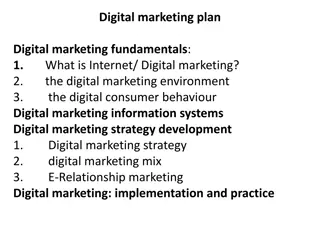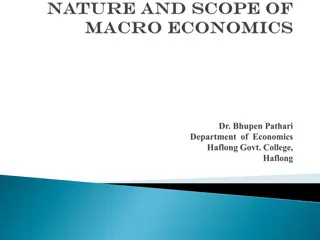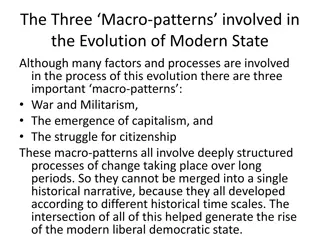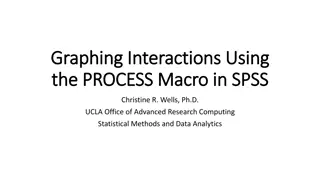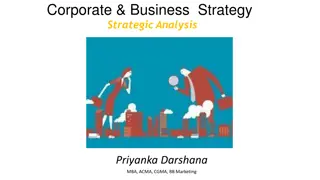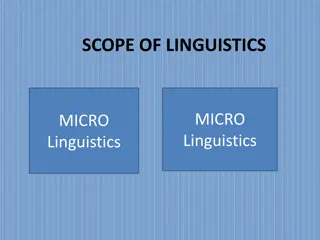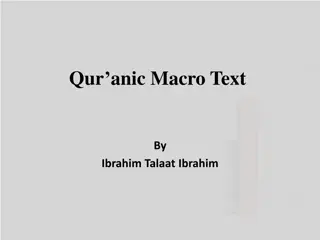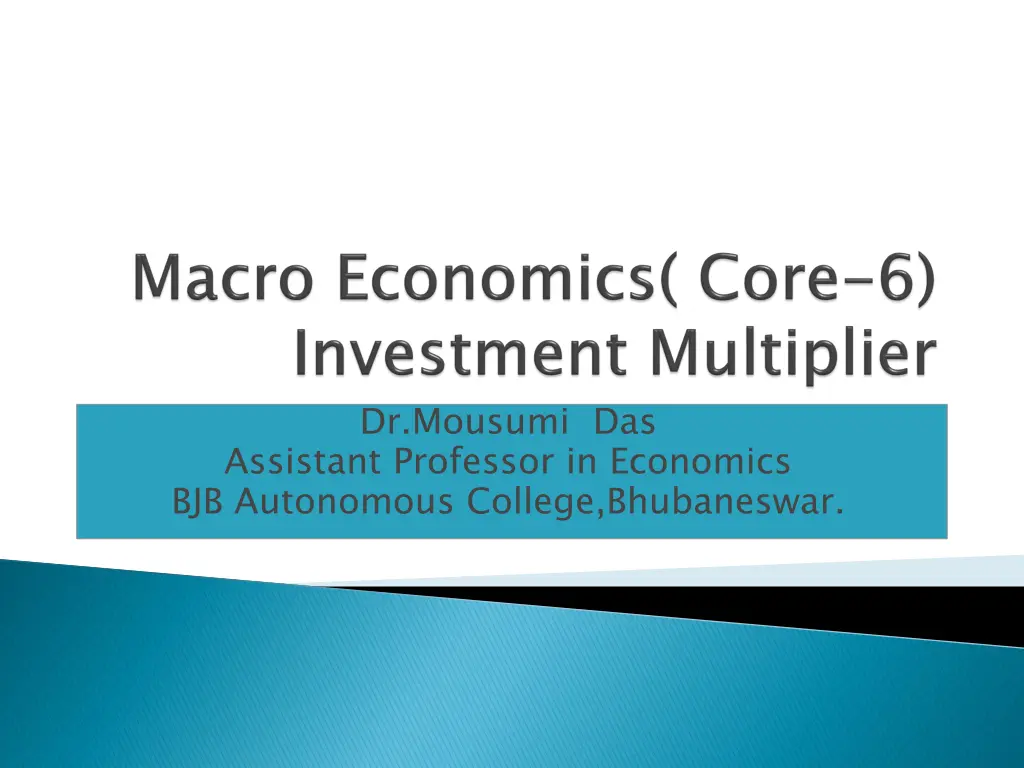
Understanding the Multiplier Effect in Economics
Dive into the concept of the multiplier effect in economics, its origins, and its implications for income propagation. Explore how the multiplier operates, the distinction between employment and investment multipliers, and the equations that characterize this economic phenomenon. Discover how changes in investment can lead to significant impacts on income levels within an economy.
Download Presentation

Please find below an Image/Link to download the presentation.
The content on the website is provided AS IS for your information and personal use only. It may not be sold, licensed, or shared on other websites without obtaining consent from the author. If you encounter any issues during the download, it is possible that the publisher has removed the file from their server.
You are allowed to download the files provided on this website for personal or commercial use, subject to the condition that they are used lawfully. All files are the property of their respective owners.
The content on the website is provided AS IS for your information and personal use only. It may not be sold, licensed, or shared on other websites without obtaining consent from the author.
E N D
Presentation Transcript
Dr.Mousumi Das Assistant Professor in Economics BJB Autonomous College,Bhubaneswar.
The concept of multiplier was used as a tool of income propagation . Keynes gives credit to R.F.Kahn for 1stintroducing the concept of Multiplier into economic theory in 1931. But Kahn s was an employment multiplier where as Keynes developed an Investment Multiplier.
Multiplier is a no by which the change in Investment must be multiplied to get the resulting change in Income. In Keynes words- It tells us when there is an increment of aggregate investment ,income will increase by k times the investment. Symbollically- Y=k I k= Y/ I Where Y=Change in Income K=Multiplier, I=change in Investment
Y=C+I Y= C+ I Y/ Y= C+ I/ Y 1=mpc+ I/ Y (As mpc= C/ Y) I/ Y=1-mpc Y/ I=1/1-mpc Y=1/1-mpc ( I)=1/mps ( I) Comparing with Y=k I K=1/1-mpc or 1/mps
Case-1(When Investment is Autonomous) Q C+ I+I Initial point of equilibrium is P & equilibrium level of income is OY. Suppose autonomous investment increases by by I so that new A.D function is C+I+ I Since Y=k I & I=QS & Y=PR=YY1 PR=QR=QS+SR C+I P S C& I C=f(Y) R I+ I I Income Y Y1 PR/PR=QS+SR/PR 1=QS/PR+SR/PR(butQS/PR= I/ Y & SR/PR= C/ Y)
PR/PR=QS +SR/PR 1=QS/PR +SR/PR 1= I/ Y+ C/ Y 1- C/ Y= I/ Y 1-mpc= I/ Y Y/ I=I/1-MPC Y=1/1-MPC( I) Comparing with Y=k I K=1/1-mpc
If we take Savings & Investment curves Now I=SR, Y=YY1=PR MPS=SR/PR= slope of savings curve So, k= Y/ I=PR/SR K=1/SR/PR=1/MPS=1/1-MPC instead, then the economyisat equilibriumatS=Ii.eatP corresponding to OY level of income. With an increase in autonomous investment by I now new investment curve becomes I+ I so that new new equilibrium point is S at OY1 level of income. Saving/ Investment S=f(y) I S P I R Y Y1 income
MPI=SR/PR) 1/k=mps-mpi k=1/mps-mpi If I=f(Y) is assumed to be a function of Y, then the initial point of equilibrium is at P at OY level of income. let investment rise to I =I(Y), hence I=QS where as Y=YY1PR. Since Y=k I or 1/k= I/ Y=QS/PR=QR-SR/PR 1/k=QR/PR-SR/PR(but MPS=QR/PR & S=f(y) Savings/ investment I1=I (y) Q I=I(Y) S P R Y Y1 income
1). MPC must remain constant throughout. 2).New higher levels of investment is maintained long enough for the completion of adjustment process. 3).No time lags involved in sucessive doses of expenditure on consumption. 4).No role to be played by induced investment. 5).Production of consumption goods must respond to changes in demand. 6). Existence of industrial economy. 7). Existence of involuntary Unemployment. 8). Existence of unutilised capacity in consumer goods industry. 9). Existence of closed economy. (Points to be expanded using books and ur own words)
1). Consumer goods not available in sufficient quantities. 2).Break in continuous flow of investment. 3).Investment in one sector should not be beset with disinvestment in other. 4).Investment should increase both income & Employment. 5).Size of multiplier is affected by both public & private investment but public investment is autonomous & private is profit oriented. 6).MPC does not remain constant during the adjustment process. 7).Greater the time lags , less will be effect of multiplier. 8).Full employment level should not be there.
1)Savings;-As k=1/mps, hence higher the savings lower will be the multiplier effect. 2).Debt cancellation:- If a part of current income goes for debt cancellation then it is a leakage from the system. 3).Accumulation of idle cash for precautionary or transaction motives is a leakage from the system. 4).imports:-Money spend on imports may be considered as a leakage from domestic income stream.
5).Taxation/undistributed corporate profits;- Any increase in this is a leakage from the domestic income stream. 6) Purchase of old stocks and securities:- (points to be expanded in your own words after referring to books). Thank You.

